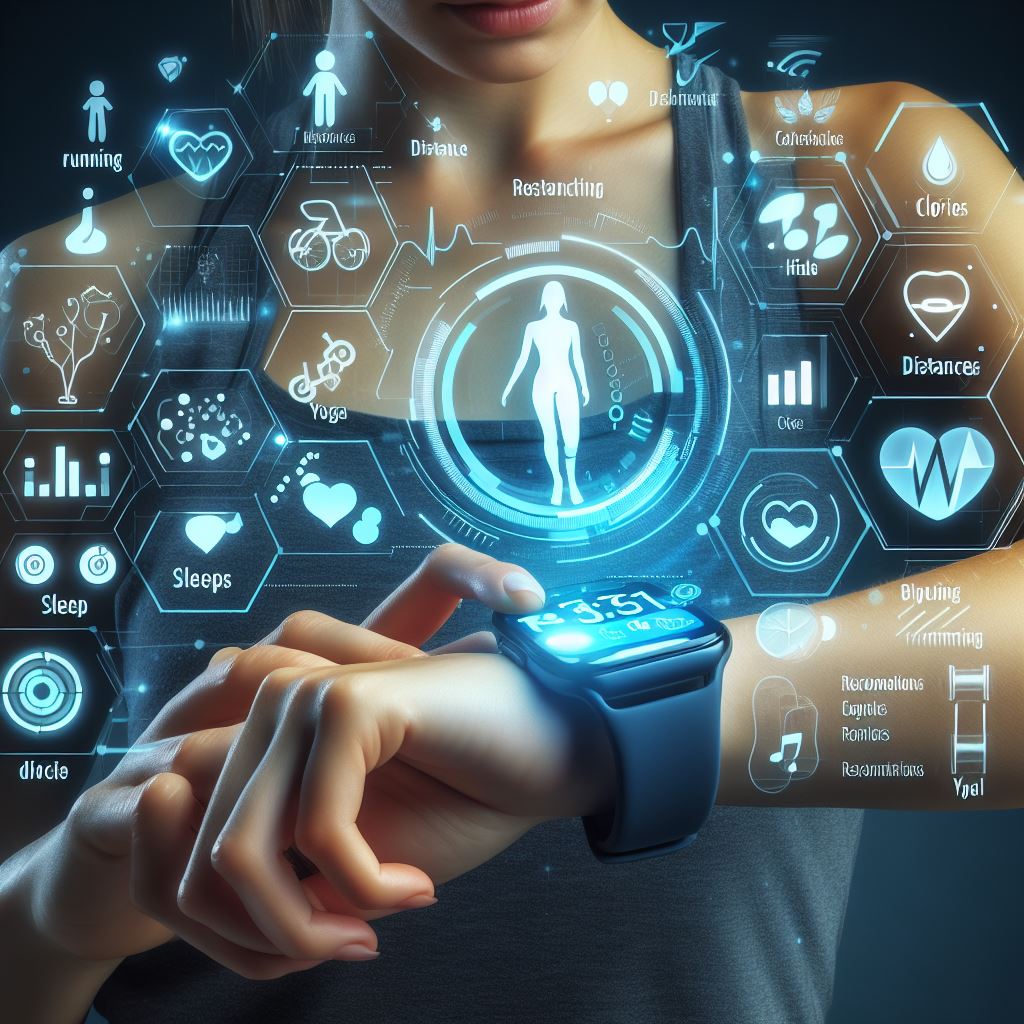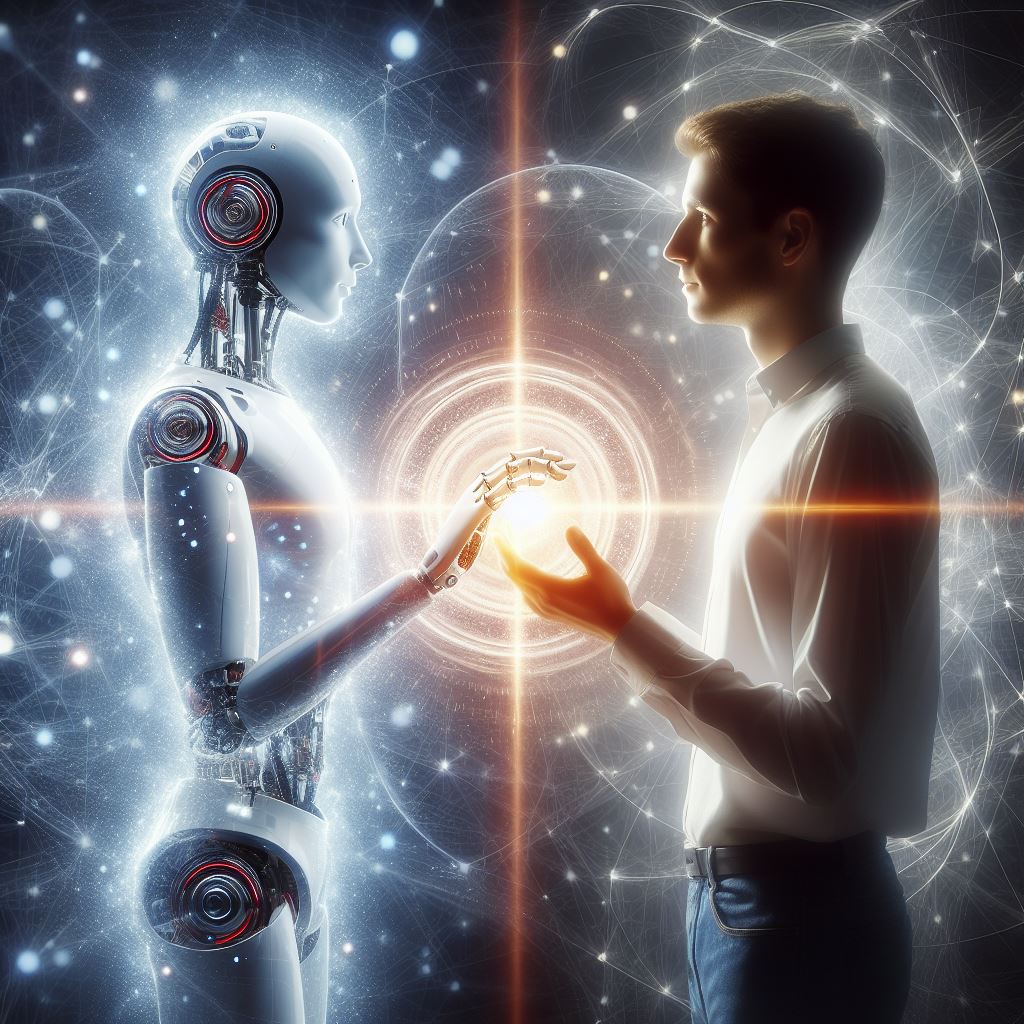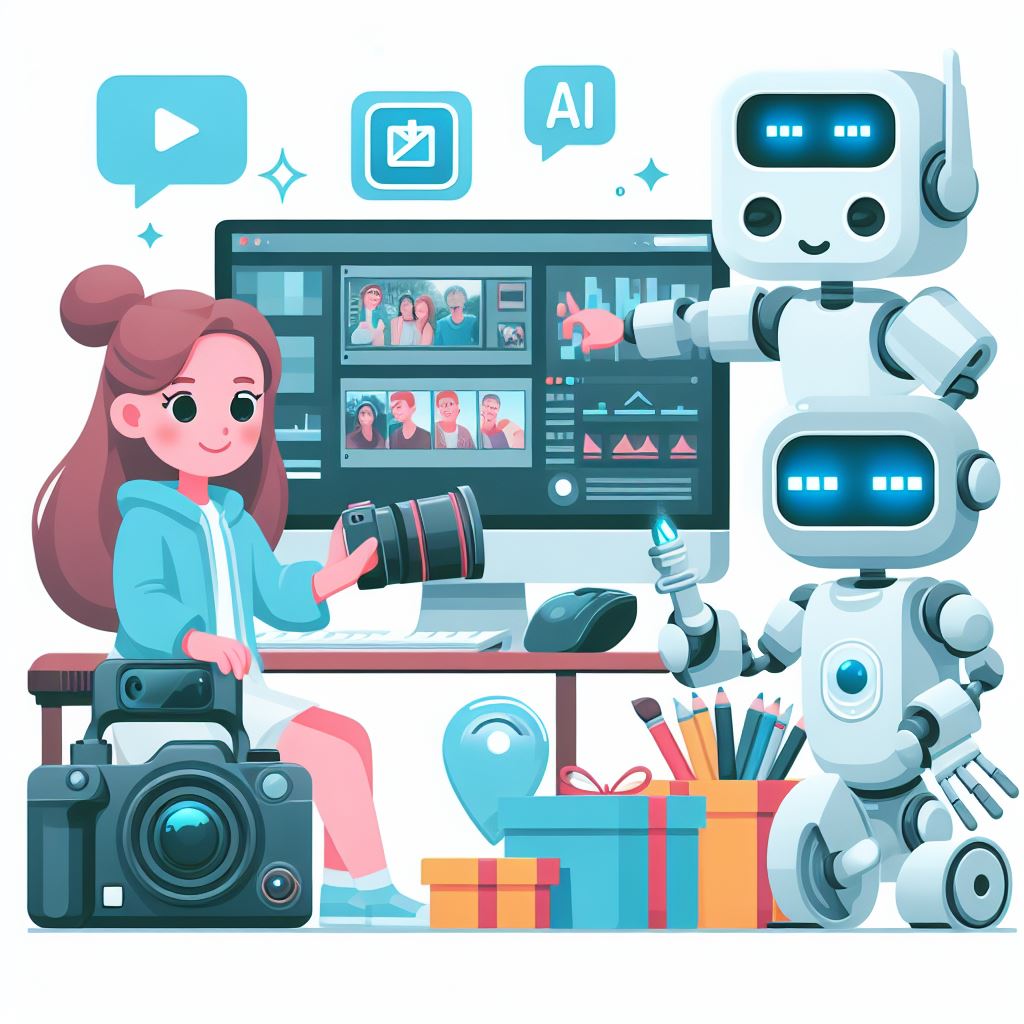
Fitness and health are vital and challenging aspects of our lives, as they can affect our physical, mental, and emotional well-being, as well as our productivity, performance, and happiness. However, fitness and health are also constantly evolving, as we need to consider many factors, such as nutrition, exercise, sleep, stress, and environment, to maintain and improve our fitness and health.
Fortunately, we don’t have to do it alone. There are many AI tools that can help us with fitness and health, by providing us with features, functions, and feedback. AI tools can also help us improve our fitness and health skills, by providing us with tutorials, tips, and tricks. AI tools can also help us save time, money, and effort, by automating and optimizing our fitness and health workflow.
In this blog, we will introduce some of the best AI tools for fitness and health in 2024, and how to use them effectively.
AI for Nutrition
Nutrition is a key factor that can affect our fitness and health, as it can provide us with the energy, nutrients, and hydration, that we need to function and thrive. However, nutrition can also be challenging, as we need to consider many aspects, such as calories, macros, micros, allergies, preferences, and goals, to plan and follow a balanced and healthy diet.
AI can help us with nutrition, by using various techniques, such as natural language processing, computer vision, and machine learning, to create and apply nutrition tools, that can monitor and analyze our food intake, and provide us with personalized and optimized nutrition plans, recommendations, and feedback, based on various factors, such as our age, weight, height, activity level, health condition, and fitness goal.
Here are some examples of how AI can help us with nutrition:
- AI can help us monitor our food intake, by using natural language processing and computer vision, to recognize and record our food items, portions, and calories, by using various features, such as voice, text, image, or video, to input and output our food data. For example, AI can help us monitor our food intake, such as MyFitnessPal, Foodvisor, and Bite.ai, that can recognize and record our food items, portions, and calories, by using various features, such as voice, text, image, or video, to input and output our food data.
- AI can help us analyze our food intake, by using machine learning and data science, to process and evaluate our food data, and provide us with various insights, statistics, and trends, that can help us understand and improve our eating habits, patterns, and behaviors. For example, AI can help us analyze our food intake, such as Nutrino, Lifesum, and Noom, that can process and evaluate our food data, and provide us with various insights, statistics, and trends, that can help us understand and improve our eating habits, patterns, and behaviors.
- AI can help us optimize our food intake, by using machine learning and data science, to generate and suggest personalized and optimized nutrition plans, recommendations, and feedback, that can help us achieve and maintain our fitness and health goals, such as weight loss, weight gain, muscle gain, or health improvement. For example, AI can help us optimize our food intake, such as Eat This Much, PlateJoy, and Lumen, that can generate and suggest personalized and optimized nutrition plans, recommendations, and feedback, that can help us achieve and maintain our fitness and health goals, such as weight loss, weight gain, muscle gain, or health improvement.
AI for Exercise
Exercise is another key factor that can affect our fitness and health, as it can provide us with the strength, endurance, and flexibility, that we need to perform and excel. However, exercise can also be challenging, as we need to consider many aspects, such as type, intensity, duration, frequency, and progression, to design and follow an effective and safe exercise program.
AI can help us with exercise, by using various techniques, such as computer vision, natural language processing, and machine learning, to create and apply exercise tools, that can monitor and analyze our body movements, and provide us with personalized and optimized exercise programs, instructions, and feedback, based on various factors, such as our fitness level, health condition, and fitness goal.
Here are some examples of how AI can help us with exercise:
- AI can help us monitor our body movements, by using computer vision and natural language processing, to recognize and record our body posture, alignment, and motion, by using various features, such as image, video, or voice, to input and output our body data. For example, AI can help us monitor our body movements, such as Fitbit, Apple Watch, and Google Fit, that can recognize and record our body posture, alignment, and motion, by using various features, such as image, video, or voice, to input and output our body data.
- AI can help us analyze our body movements, by using machine learning and data science, to process and evaluate our body data, and provide us with various insights, statistics, and trends, that can help us understand and improve our exercise habits, patterns, and behaviors. For example, AI can help us analyze our body movements, such as Strava, MapMyFitness, and Nike Run Club, that can process and evaluate our body data, and provide us with various insights, statistics, and trends, that can help us understand and improve our exercise habits, patterns, and behaviors.
- AI can help us optimize our body movements, by using machine learning and data science, to generate and suggest personalized and optimized exercise programs, instructions, and feedback, that can help us achieve and maintain our fitness and health goals, such as strength, endurance, flexibility, or health improvement. For example, AI can help us optimize our body movements, such as Freeletics, Peloton, and Mirror, that can generate and suggest personalized and optimized exercise programs, instructions, and feedback, that can help us achieve and maintain our fitness and health goals, such as strength, endurance, flexibility, or health improvement.
AI for Sleep
Sleep is another key factor that can affect our fitness and health, as it can provide us with the rest, recovery, and rejuvenation, that we need to function and thrive. However, sleep can also be challenging, as we need to consider many aspects, such as quality, quantity, timing, and consistency, to ensure and improve our sleep hygiene, patterns, and cycles.
AI can help us with sleep, by using various techniques, such as natural language processing, computer vision, and machine learning, to create and apply sleep tools, that can monitor and analyze our sleep stages, and provide us with personalized and optimized sleep plans, recommendations, and feedback, based on various factors, such as our age, lifestyle, and health condition.
Here are some examples of how AI can help us with sleep:
- AI can help us monitor our sleep stages, by using natural language processing and computer vision, to recognize and record our sleep phases, such as light, deep, REM, and awake, by using various features, such as voice, image, or video, to input and output our sleep data. For example, AI can help us monitor our sleep stages, such as Fitbit, Oura, and Dreem, that can recognize and record our sleep phases, such as light, deep, REM, and awake, by using various features, such as voice, image, or video, to input and output our sleep data.
- AI can help us analyze our sleep stages, by using machine learning and data science, to process and evaluate our sleep data, and provide us with various insights, statistics, and trends, that can help us understand and improve our sleep habits, patterns, and cycles. For example, AI can help us analyze our sleep stages, such as Sleep Cycle, SleepScore, and Sleep as Android, that can process and evaluate our sleep data, and provide us with various insights, statistics, and trends, that can help us understand and improve our sleep habits, patterns, and cycles.
- AI can help us optimize our sleep stages, by using machine learning and data science, to generate and suggest personalized and optimized sleep plans, recommendations, and feedback, that can help us achieve and maintain our fitness and health goals, such as rest, recovery, and rejuvenation. For example, AI can help us optimize our sleep stages, such as Headspace, Calm, and Noisli, that can generate and suggest personalized and optimized sleep plans, recommendations, and feedback, that can help us achieve and maintain our fitness and health goals, such as rest, recovery, and rejuvenation.
AI for Stress
Stress is another key factor that can affect our fitness and health, as it can cause or worsen various physical, mental, and emotional problems, such as headaches, insomnia, anxiety, depression, and heart disease. However, stress can also be challenging, as we need to consider many aspects, such as sources, levels, types, and effects, to manage and reduce our stress levels, and cope and deal with our stressors.
AI can help us with stress, by using various techniques, such as natural language processing, computer vision, and machine learning, to create and apply stress tools, that can monitor and analyze our stress signals, and provide us with personalized and optimized stress plans, recommendations, and feedback, based on various factors, such as our personality, mood, and situation.
Here are some examples of how AI can help us with stress:
- AI can help us monitor our stress signals, by using natural language processing and computer vision, to recognize and record our stress indicators, such as heart rate, blood pressure, skin temperature, voice tone, facial expression, and body language, by using various features, such as voice, image, or video, to input and output our stress data. For example, AI can help us monitor our stress signals, such as Spire, Muse, and BioBase, that can recognize and record our stress indicators, such as heart rate, blood pressure, skin temperature, voice tone, facial expression, and body language, by using various features, such as voice, image, or video, to input and output our stress data.
- AI can help us analyze our stress signals, by using machine learning and data science, to process and evaluate our stress data, and provide us with various insights, statistics, and trends, that can help us understand and improve our stress levels, patterns, and effects. For example, AI can help us analyze our stress signals, such as StressScan, Moodpath, and MindDoc, that can process and evaluate our stress data, and provide us with various insights, statistics, and trends, that can help us understand and improve our stress levels, patterns, and effects.
- AI can help us optimize our stress signals, by using machine learning and data science, to generate and suggest personalized and optimized stress plans, recommendations, and feedback, that can help us manage and reduce our stress levels, and cope and deal with our stressors. For example, AI can help us optimize our stress signals, such as Calm, Headspace, and Noisli, that can generate and suggest personalized and optimized stress plans, recommendations, and feedback, that can help us manage and reduce our stress levels, and cope and deal with our stressors.
AI for Environment
Environment is another key factor that can affect our fitness and health, as it can provide us with the air, water, and light, that we need to survive and thrive. However, environment can also be challenging, as we need to consider many aspects, such as quality, quantity, timing, and consistency, to ensure and improve our environmental hygiene, patterns, and cycles.
AI can help us with environment, by using various techniques, such as natural language processing, computer vision, and machine learning, to create and apply environment tools, that can monitor and analyze our environmental factors, and provide us with personalized and optimized environment plans, recommendations, and feedback, based on various factors, such as our location, season, and health condition.
Here are some examples of how AI can help us with environment:
- AI can help us monitor our environmental factors, by using natural language processing and computer vision, to recognize and record our environmental variables, such as air quality, water quality, and light quality, by using various features, such as voice, image, or video, to input and output our environment data. For example, AI can help us monitor our environmental factors, such as Awair, Tapp, and Philips Hue, that can recognize and record our environmental variables, such as air quality, water quality, and light quality, by using various features, such as voice, image, or video, to input and output our environment data.
- AI can help us analyze our environmental factors, by using machine learning and data science, to process and evaluate our environment data, and provide us with various insights, statistics, and trends, that can help us understand and improve our environmental habits, patterns, and cycles. For example, AI can help us analyze our environmental factors, such as Plume, Waterbot, and Sleep Cycle, that can process and evaluate our environment data, and provide us with various insights, statistics, and trends, that can help us understand and improve our environmental habits, patterns, and cycles.
- AI can help us optimize our environmental factors, by using machine learning and data science, to generate and suggest personalized and optimized environment plans, recommendations, and feedback, that can help us achieve and maintain our fitness and health goals, such as breathing, drinking, and sleeping. For example, AI can help us optimize our environmental factors, such as Nest, Brita, and LIFX, that can generate and suggest personalized and optimized environment plans, recommendations, and feedback, that can help us achieve and maintain our fitness and health goals, such as breathing, drinking, and sleeping.
Conclusion
AI tools can help us with fitness and health, by providing us with features, functions, and feedback, as well as generating and optimizing our nutrition, exercise, sleep, stress, and environment tools. AI tools can also help us improve our fitness and health skills, by providing us with tutorials, tips, and tricks. AI tools can also help us save time, money, and effort, by automating and optimizing our fitness and health workflow.
However, AI tools can also pose some challenges, such as being expensive, complex, and risky, and they require some strategies, such as defining our objectives, choosing our tools, using our tools, monitoring our tools, and improving our tools, to use them effectively.
Therefore, AI tools and fitness and health are not in conflict, but in harmony, as they can complement each other, and create something that is greater than the sum of their parts. AI tools and fitness and health are not mutually exclusive, but mutually inclusive, as they can benefit from each other, and enrich each other. AI tools and fitness and health are not opposites, but partners, as they can work together, and create together.


Can you be more specific about the content of your article? After reading it, I still have some doubts. Hope you can help me.
Your article helped me a lot, is there any more related content? Thanks!
Your article helped me a lot, is there any more related content? Thanks!
Thanks for sharing. I read many of your blog posts, cool, your blog is very good.
Thank you for your sharing. I am worried that I lack creative ideas. It is your article that makes me full of hope. Thank you. But, I have a question, can you help me?
I don’t think the title of your article matches the content lol. Just kidding, mainly because I had some doubts after reading the article.
I don’t think the title of your article matches the content lol. Just kidding, mainly because I had some doubts after reading the article.
Can you be more specific about the content of your article? After reading it, I still have some doubts. Hope you can help me.